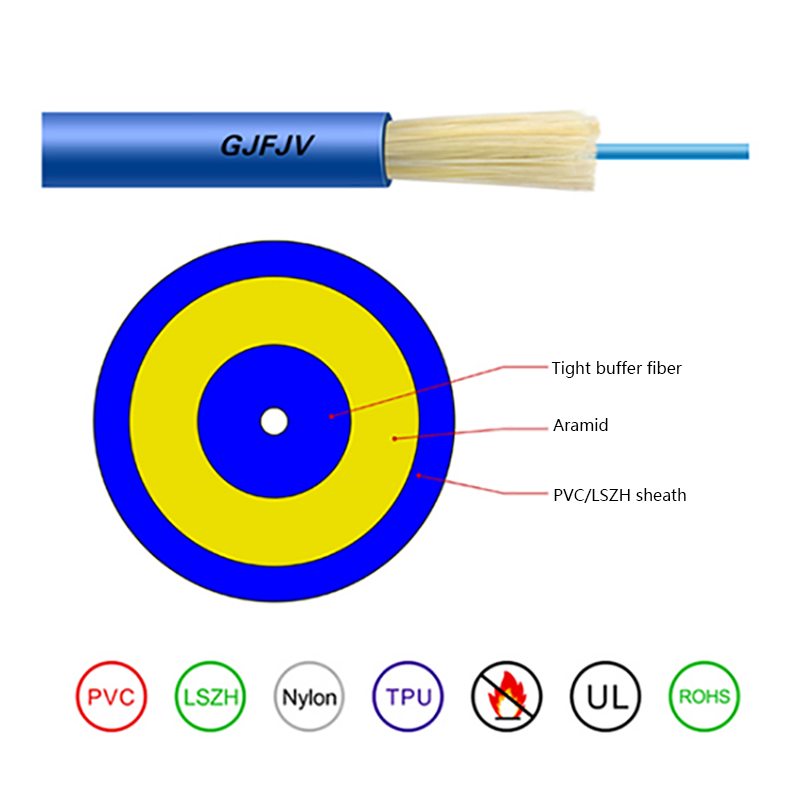How do FTTH butterfly optic cables ensure signal integrity over long distances?
In the rapidly evolving landscape of fiber-optic technology, ensuring the integrity of signals over long distances is paramount for maintaining the efficiency and reliability of communication networks. One of the key innovations in this domain is the FTTH (Fiber to the Home) butterfly optic cables. Designed with precision and engineered for performance, butterfly cables are a critical component in optimizing the delivery of high-speed internet and data transmission, especially in the context of fiber-to-the-home infrastructure. But how exactly do these cables maintain signal integrity over extensive distances? The answer lies in their specialized design, advanced materials, and innovative engineering.
The Role of the Butterfly Cable Design
FTTH butterfly optic cables are meticulously designed to minimize signal degradation. Their unique construction consists of multiple fibers enclosed within a protective jacket, often resembling the wings of a butterfly — hence the name. This design not only facilitates easier installation and management but also provides robust protection against external factors such as temperature fluctuations, physical strain, and environmental hazards. The streamlined form of the cable allows for efficient routing within tight spaces, a crucial factor in residential and commercial applications.
What sets the butterfly cable apart is its ability to manage the vast distances that fiber-optic signals travel. The physical structure of these cables ensures that the signal remains strong and clear, reducing the risk of attenuation (signal loss). The multiple fibers within the cable work in tandem to deliver uninterrupted service, especially in long-haul transmission, which is a critical requirement in FTTH networks.

Minimizing Attenuation and Dispersion
Signal attenuation and dispersion are two of the most significant challenges faced in long-distance fiber-optic transmission. Attenuation refers to the gradual loss of signal strength as it travels through the fiber, while dispersion involves the spreading of the light signal, which can distort data and affect the clarity of communication.
FTTH butterfly optic cables are designed to minimize both of these issues. By using high-quality, low-loss materials such as Corning’s SMF-28 or similar fiber types, these cables achieve a remarkable reduction in signal attenuation. The fibers are carefully engineered to allow light to travel with minimal loss, even over extended distances. The construction of the cable further enhances its performance, using a combination of robust coatings and insulation to shield the fibers from environmental interference.
Additionally, the design of butterfly cables helps mitigate dispersion. The fiber core and cladding are optimized to maintain the integrity of the light signal across long distances, ensuring that the data transmitted remains accurate and uncorrupted. This becomes especially important as data packets travel through the network, maintaining clarity and speed, even in high-bandwidth applications like video streaming, gaming, and cloud services.
The Impact of Cable Material on Signal Quality
The materials used in the construction of FTTH butterfly optic cables play a vital role in preserving signal quality. The optical fibers themselves are typically made of silica glass, which offers superior transparency and minimal light scattering. This material ensures that the light signals can travel efficiently over vast distances without significant loss of power or clarity.
Furthermore, the outer jacket of the butterfly cable is designed to protect the sensitive fibers from physical damage, moisture, and other environmental factors. Modern cables incorporate advanced coatings such as UV-resistant jackets and moisture barriers, which safeguard the integrity of the fiber-optic strands over time. The durability of these materials contributes significantly to the long-term reliability of the network, ensuring that the signal remains strong and clear for years.



 English
English русский
русский Español
Español عربى
عربى 中文简体
中文简体




















